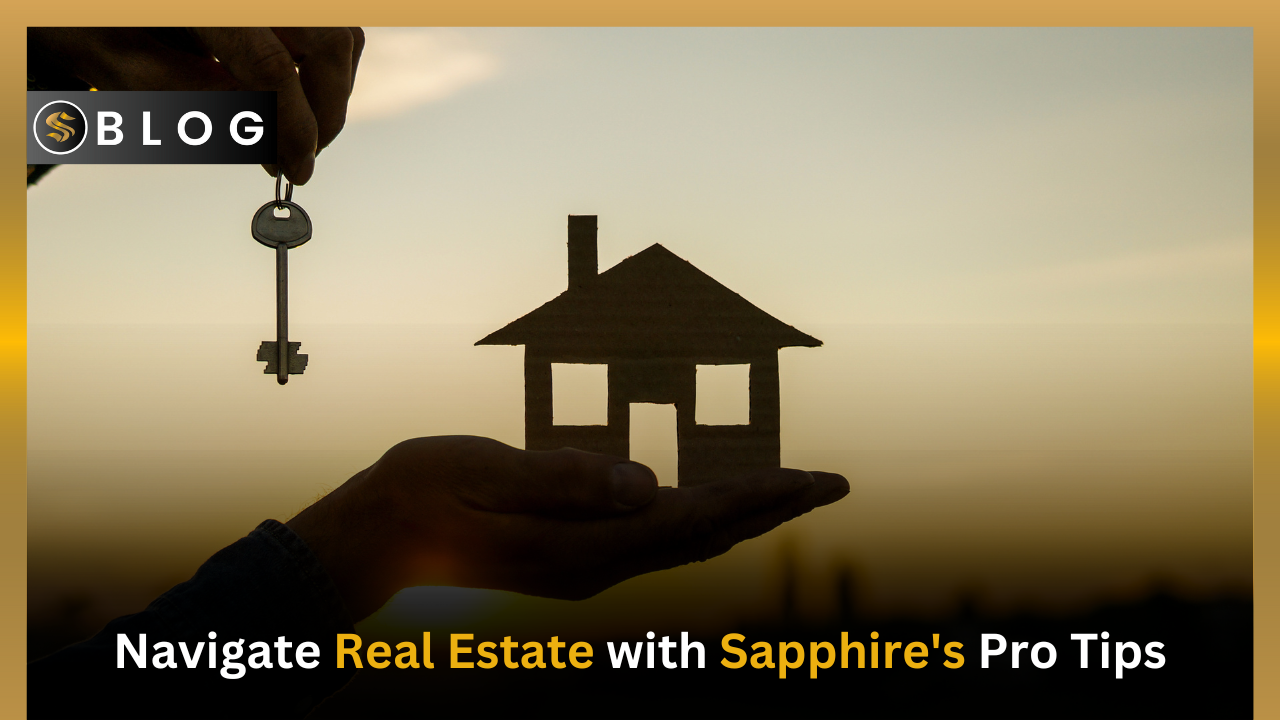
Share This Story, Choose Your Platform!
Invest with Confidence: Real Estate Insights from Sapphire Builders
The real estate and construction sector in Pakistan has witnessed significant growth and diversification in recent years. For those looking to buy property in this dynamic market, it’s crucial to understand the terminology and practices involved. In this guide, we’ll break down some key terms and practices, using the Pakistani Rupee (PKR) as our reference currency.
-
Property Documentation
Property documentation is the backbone of any real estate transaction in Pakistan. It encompasses all the paperwork and legal requirements associated with buying or selling property. Essential documents include sale deeds, transfer deeds, and property titles. The cost of property documentation can vary, but it generally ranges from 10,000 PKR to 50,000 PKR, depending on the property’s value.
Example: To purchase a 10-marla house in Lahore for 10,000,000 PKR, you might spend approximately 25,000 PKR on property documentation.
-
Mutation
Mutation refers to the process of officially changing the ownership of a property in government land records. It’s an essential step after acquiring property, whether through a sale, gift, or inheritance. The cost of mutation can vary depending on the property’s location, but it’s typically between 5,000 PKR to 20,000 PKR.
Example: After inheriting a piece of land in Rawalpindi, you’ll need to pay around 10,000 PKR for the mutation process.
-
Registry
Property registry is the formal procedure of recording the transfer of property ownership in Pakistan. The cost of property registry is typically calculated as a percentage of the property’s value and can range from 1% to 2%. For example, if you’re purchasing a property for 5,000,000 PKR, the registry cost could be approximately 50,000 PKR to 100,000 PKR.
Example: To register a newly acquired apartment in Karachi worth 7,000,000 PKR, the property registry cost might be around 70,000 PKR to 140,000 PKR.
-
Transfer of Property
The transfer of property involves drafting and signing a transfer deed, which officially transfers ownership from the seller to the buyer. The cost of this process varies depending on legal fees and notary charges. On average, it may range from 20,000 PKR to 50,000 PKR.
Example: To transfer ownership of a 1-kanal plot in Islamabad, worth 15,000,000 PKR, the cost of property transfer might be around 35,000 PKR.
-
Per Square Yard Pricing
In Pakistan, property prices are often quoted in terms of cost per square yard. This is particularly common when dealing with residential plots. The price per square yard can vary significantly depending on the location and type of property. For instance, in Karachi, the price per square yard in a prime residential area might range from 50,000 PKR to 100,000 PKR or more.
Example: A 200-square yard residential plot in Lahore, priced at 2,000,000 PKR, would have a per square yard cost of 10,000 PKR.
-
No Objection Certificate (NOC)
In some areas, especially where property development is regulated, obtaining a No Objection Certificate (NOC) from relevant authorities is a prerequisite for property transactions. The cost of an NOC can vary based on the location and the project’s size and scope. It could range from 10,000 PKR to 100,000 PKR or more.
Example: To obtain an NOC for a residential construction project in Islamabad, the cost might be around 30,000 PKR.
-
Apartment/Flat vs. House
In urban areas like Karachi, Lahore, and Islamabad, you’ll often come across the choice between apartments/flats and houses. The price difference between the two can be significant. For example, a 3-bedroom apartment in a prime location in Karachi might cost around 5,000,000 PKR, while a similar-sized house in the same area could be priced at 12,000,000 PKR or more.
Example: In Lahore, a 1,500-square foot apartment in a reputable housing society might be priced at 6,000,000 PKR, whereas a 5-marla house in the same area could cost around 8,000,000 PKR.
-
Development Authority
Various cities in Pakistan have development authorities responsible for regulating construction and development activities. The fees associated with these authorities vary by location. For instance, in Lahore, the Lahore Development Authority (LDA) charges development fees based on the project’s size and type. These fees can range from 50 PKR to 200 PKR per square foot.
Example: To construct a 10-marla house in an LDA-approved housing society in Lahore, you might need to pay approximately 150,000 PKR in development fees.
-
Leasehold vs. Freehold
Properties in Pakistan can be categorized as leasehold or freehold. Leasehold properties are typically leased from government authorities, while freehold properties are owned outright. The distinction in terms of price can be significant. Leasehold properties may be available at a lower upfront cost, but they come with annual lease renewal fees. For example, a 5-marla leasehold plot in a prime area of Karachi might have an initial cost of 500,000 PKR, with an annual lease renewal fee of 10,000 PKR.
Example: In contrast, a 5-marla freehold plot in the same area of Karachi might be priced at 1,000,000 PKR with no annual lease renewal fees.
-
Possession Letter
The possession letter is a document issued by the developer or seller, granting the buyer physical possession of the property. This is a crucial step before you can start construction or move into the property. The cost of obtaining a possession letter can vary but is usually around 10,000 PKR to 20,000 PKR.
Example: To obtain a possession letter for a newly purchased 1-kanal plot in Islamabad, the cost might be approximately 15,000 PKR.
Expert Consultation with Sapphire Builders and Associates
One of the vital aspects of making informed decisions in Pakistan’s real estate market is having access to expert consultation. When it comes to reliable advice and guidance, Sapphire Builders and Associates stand out as one of the top real estate and construction companies in Rawalpindi and Islamabad. They offer unparalleled consultancy services to their customers, helping them navigate the complexities of real estate investments.
Exciting Projects by Sapphire Builders
Sapphire Builders and Associates not only provide expert consultancy but also offer some of the most promising real estate projects in the region. Here are a few of their noteworthy developments:
- Opal Mall and Luxury Suites in Bahria Phase 4: This project promises a blend of modern luxury and convenience in one of the most sought-after locations. With Sapphire Builders, you can explore opportunities to invest in Opal Mall and Luxury Suites.
- Oak Vista in Murree: If you’re looking for a serene getaway in the picturesque hills of Murree, Sapphire Builders’ Oak Vista project is a great investment option. These properties offer a unique opportunity to own a piece of paradise in the hills.
In conclusion, understanding these key terms and practices is essential for anyone looking to navigate Pakistan’s real estate and construction sector. It’s important to research and consult with local experts to ensure a smooth and transparent property transaction in the country. With the right knowledge, you can make informed decisions and effectively manage the costs associated with buying or investing in property in Pakistan. Sapphire Builders and Associates can be your trusted partner in this journey, providing expert guidance and access to some of the most exciting real estate projects in the Rawalpindi and Islamabad region.



